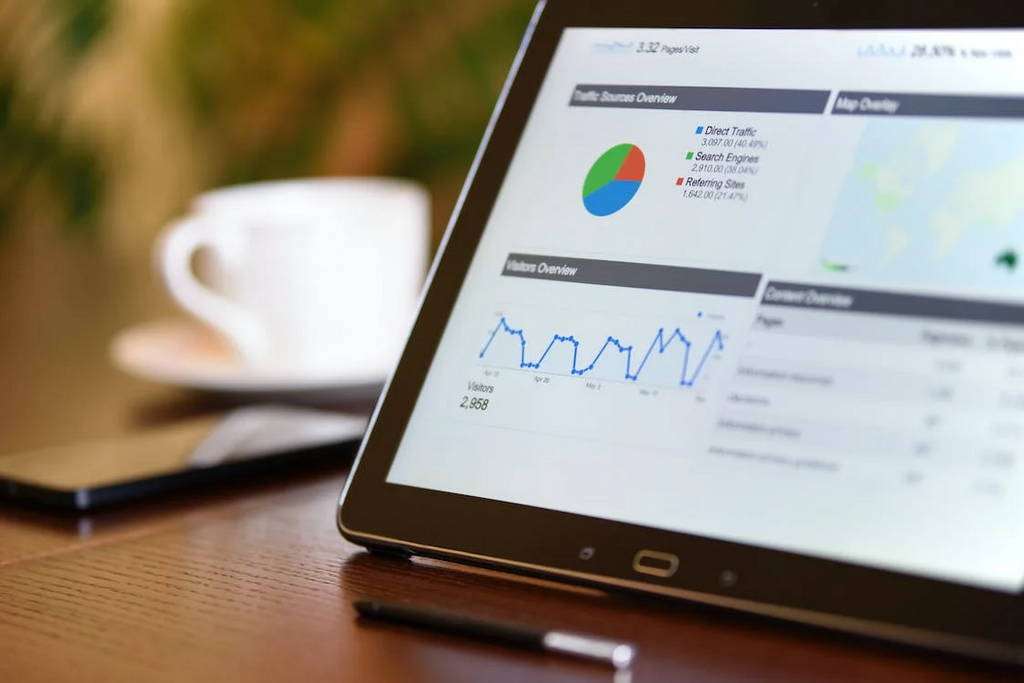Being a wholesale seller on Amazon requires a different approach.
You don’t have full control over the listing – and you’re often held within the guidelines of your supplier/manufacturer when it comes to marketing.
But wholesaling has its upsides too. With the right approach, you can gain serious traction on Amazon and outperform the competition.
So if you’re looking to grow and scale your business as a reseller on Amazon, this article is for you. Let’s dive right in!
Use this outline to skip to any section of this page:
- Start with supply chain
- Compare wholesale vs. other methods
- Product research
- Determine margins
- Meet reseller requirements
- Form good relationships with manufacturers
- Choose your fulfillment method
- Use Amazon marketing tools to drive sales
- Win the buy box
Start with supply chain
No matter how you sell on Amazon… first order of business is to set up a cost-saving supply chain.
This is particularly true for finding a 3PL and FBA prep partner – which has the largest impact on your bottom line. Without a reliable warehousing and distribution setup, your costs can skyrocket and your products may not reach customers to meet demand.
Compare wholesale vs. other methods
Wholesale selling is one of the most popular methods for selling on Amazon.
It involves buying products in bulk from a manufacturer or distributor and then reselling them on the platform.
- The main advantage of using this method is that it can provide a steady flow of inventory because you are purchasing large quantities of products at once.
- This allows you to reduce costs and keep prices competitive.
- Since you are buying directly from a manufacturer or distributor, you can often get access to exclusive deals and discounts that aren’t available to other sellers.
On the downside, you don’t have much control over pricing or product customization when using wholesale selling.
- It’s hard to compete with some other sellers who are listing similar products.
- This is because they may be able to offer better prices due to their own direct agreements with manufacturers or distributors.
- Since you are making large investments for product purchases upfront, wholesale selling requires a significant financial commitment before you start seeing profits from your sales.
- Because it’s difficult to forecast demand accurately with this method, there is always a risk of being stuck with excess inventory that cannot be sold at full price.
Product research
When it comes to product research for selling wholesale on Amazon, there are a few important tips to consider:
- Look for established brands. Working with reputable brands can not only increase the reliability of your product, but also help you build your reputation as a seller and make sure customers trust your offerings.
- Look for products with high search volume. This can indicate that there is a demand for the product and that it is likely to sell well on Amazon.
- Look for products with great reviews – this will help ensure that customers are satisfied with their purchases and will lead to repeat purchases and positive reviews about your business.
To maximize the chances of success when selling wholesale on Amazon, it’s important to do thorough product research before making any decisions.
- To start, it’s wise to have an idea of what kind of products you want to sell so that you can narrow down your choices quickly.
- After narrowing down potential options, read through customer reviews and ratings online or on Amazon itself so that you can be confident in the quality of the items you’re selling before investing in them.
- Use keyword research tools such as Google Trends to determine the most popular search terms related to the product in order to assess its potential profitability before making any investments.
- Utilize external sources such as industry blogs or reliable sources within the market (e.g., trade associations) in order to gain insights into upcoming trends.
By taking all these various tips into account and doing thorough research before committing to any products, sellers should be able to find profitable items that will net them considerable profits when sold through Amazon’s vast network of customers.

Determine margins
In order to determine your profit margins for selling on Amazon, it is important to first understand the product’s fees.
- Amazon charges various fees, such as storage fees and closing fees, which are based on the category of the item sold. Referral fees can vary from 8% to 45%, depending on the product.
- Closing fees are added to every shipment sent out of an Amazon fulfillment center and range from $0.50 to $1.00 per item, depending on the weight and size of the package.
- There may be other taxes and duties that need to be taken into account when calculating profits. Knowing these costs ahead of time will help you ensure that you make a profit with each sale.
The next step in determining your profit margins for selling on Amazon is to determine your product’s price.
This can be done by researching pricing trends in order to find a competitive price point that both covers your costs while still allowing you to make a reasonable profit margin.
Don’t price too high or too low – too high means you miss out on potential sales, while pricing too low could mean taking a loss with each sale. Researching not only pricing trends but also competitors’ prices can help you find the right balance when setting your own prices.
A few more points to keep in mind:
- Once you have determined what fee structures apply and set an appropriate price for your products, it is time to calculate your profitability when selling on Amazon.
- By subtracting all applicable costs (such as referral fees, closing fees, shipping costs, etc.) from your total revenue generated by sales, you can calculate how much money you make with each sale.
- This is after all expenses have been accounted for (this number is referred to as “net profits”).
- In order to maximize profits while still providing reasonable prices for customers, carefully consider cost structure and constantly review pricing trends so that you remain competitive and profitable in the marketplace.
Meet reseller requirements
The process of becoming a wholesale product reseller is not always straightforward.
It typically involves obtaining the appropriate business license, if necessary, and meeting certain requirements to be able to purchase products at discounted prices.
Depending on the type of product being sold and the country in which it is sold, these requirements can vary greatly.
- To start, a business should make sure that they are properly registered with their local government as well as any other applicable bodies for the purpose of selling wholesale products.
- This will ensure that the business meets the legal standards required for any particular area or country.
- In addition to registering with local authorities, businesses may need to acquire an additional permit or certificate that allows them to buy products in bulk at discounted prices.
- These permits are typically issued by private companies who are authorized by retailers and manufacturers to provide discounts on their products.
Once these steps have been completed, businesses must find suppliers who are willing to offer them discounted rates on their goods.
This can involve researching different wholesalers, contacting vendors directly and negotiating terms in order to get the most beneficial deal possible.
Also keep these considerations in mind:
- Businesses may need to establish a relationship with suppliers in order to gain access to exclusive deals or discounts on certain types of merchandise.
- When establishing relationships with suppliers, businesses should make sure that all agreements are outlined in writing.
- This helps ensure there’s no confusion regarding expectations and promises made between both parties.
Once these steps have been taken care of and terms established between parties involved, a business can begin selling wholesale products at discounted rates and reap profits from doing so without too much difficulty.

Form good relationships with manufacturers
The key to successfully selling wholesale products is developing strong relationships with suppliers and manufacturers.
To do this, it’s important to understand the needs of your own business and the expectations of both suppliers and customers. Building a rapport with companies you want to work with will help ensure they are willing to provide quality goods in a timely fashion.
There are several steps involved in forming solid business relationships with suppliers or manufacturers:
- First, it’s essential to research the marketplace and identify reliable providers who can offer the best selection of products.
- You’ll need to consider factors like price, quality control and delivery times when negotiating terms.
- Once you’ve identified potential vendors, take time to discuss their services.
- During this time, ask questions about pricing, minimum order quantities and availability in order to make an informed decision.
In addition to researching potential partners, building strong relationships requires ongoing communication.
Keeping channels open between yourself as a buyer and your supplier or manufacturer allows for more flexibility when resolving any issues that may arise throughout the process.
- Keeping detailed records of all your transactions is another important step that will help maintain mutual trust between parties involved in the transaction.
- Regular follow-up calls or emails will give your suppliers confidence that you’re serious about doing business with them on an ongoing basis.
- This also helps you stay up-to-date on new products or any changes in their terms and conditions.
Ultimately, cultivating lasting partnerships with suppliers is key as they are a source of valuable feedback that can be used to improve upon future orders or product lines.
Choose your fulfillment method
In order to choose the best fulfillment method for selling wholesale products, one needs to understand the differences between:
- FBA (Fulfillment by Amazon)
- FBM (Fulfillment by Merchant)
- SFP (Seller Fulfilled Prime)
Each of these services offer different benefits and draw-backs depending on the type of product being sold.
FBA is a great option for businesses that need fast shipping times, as orders are fulfilled via Amazon’s own warehouses.
- Essentially, you ship your products to Amazon’s warehouses in bulk, and they handle the rest.
- This helps ensure that customers receive their orders quickly and conveniently.
- There are no upfront costs or minimum order sizes required in order to use this service, making it perfect for businesses starting out.
FBM requires merchants to manage the entire fulfillment process themselves, including picking, packing and shipping.
- This can require significant investment in terms of time and money, but gives merchants more control over how their products are handled and shipped.
- As a result, many larger businesses opt for this option when shipping bulk orders or high value items.
- Furthermore, using FBM allows merchants to set their own return policies which could potentially be more favorable than those offered through an Amazon channel.
Seller Fulfilled Prime is a hybrid approach that allows sellers to use their own storage facilities while still benefiting from Amazon’s fast delivery times and customer experience standards.
- This provides flexibility as well as improved visibility within Amazon’s marketplace – two powerful advantages for any business wanting to maximize sales on the platform.
- However, with access to increased sales channels comes increased competition.
- Because of this, make sure you have all your ducks in a row before deciding if this is the right approach for you.
Overall each of these services have pros and cons depending on the type of business you’re running and what kind of products you’re selling.
By understanding the differences between them, you can choose the best option based on your individual needs – ultimately helping ensure that your wholesale products are delivered quickly and efficiently with minimal cost incurred along the way!
Use Amazon marketing tools to drive sales
When selling wholesale products, Amazon’s marketing capabilities are key to success.
Amazon is the world’s largest online retailer and its advertising services provide a powerful platform for businesses to reach potential buyers.
- With Amazon Advertising, companies can create campaigns with pay-per-click (PPC) ads
- There’s also sponsored product listings ads that appear in search results pages.
- These tools allow businesses to target their advertisements to customers who are most likely to purchase their products.
- Sellers can personalize promotions by setting budgets and customizing messages for different types of customers.
Amazon also provides a variety of resources that help businesses identify and convert potential shoppers into customers. For example, Amazon’s Business Intelligence Tool lets sellers review performance data such as impressions, clicks, sales conversions, cost per acquisition (CPA), and more to better understand customer behavior.
Additionally, Amazon’s Seller Central dashboard provides detailed reports on performance metrics such as:
- Sales trends
- Customer reviews and ratings
- Search terms used by customers
- Inventory levels across channels and much more
All of these features make it easier for businesses to develop effective marketing strategies that drive more sales.

Sellers should also stay current on changes in the industry as well as customer preferences in order to stay competitive in marketplaces like Amazon Marketplace where content is constantly changing.
Make sure to track search terms used by shoppers online – especially with tools like Google Trends or Keywords Everywhere to gain insights into what type of content resonates with shoppers best.
Doing this will ensure sellers remain top of mind with current and prospective buyers alike which can lead to greater revenue over time.
And don’t forget customer engagement:
- Successful wholesale sellers must know how to build relationships with their existing customers
- At the same time, you want to continue to attract new ones through organic growth strategies such as content marketing or influencer marketing campaigns
- However, this depends on the manufacturer’s guidelines for marketing.
Sellers should strive to keep communication open with shoppers by providing timely responses via email or social media channels when they contact them regarding an order or questions about an item they purchased from them previously.
This helps foster loyalty among buyers who are likely returning customers in the future if they receive satisfactory service from the seller each time they shop from them directly on Amazon.
Offering incentives like discounts or free shipping can go a long way towards increasing brand equity over time since current buyers tend to refer friends who might be interested in similar items offered by the seller’s store page – which leads directly to new business opportunities over time.
Win the buy box
The buy box lets shoppers purchase from the “top merchant” in seconds – a huge factor in driving sales. Securing this spot is massively crucial.
When it comes to learning how to win the Amazon buy box, you must offer competitive prices, excellent customer service and fast delivery times.
- Thai allows you to gain a competitive advantage over other sellers.
- Your product will appear more prominently on Amazon and shoppers are more likely to choose your product over others due to faster delivery times and lower prices.
- Winning the buy box also allows you to increase sales volume and maximize profits without relying on third-party lowballers or discount merchants.
In addition, winning the buy box will help increase your visibility by highlighting your products above competitors’.
It will also allow you to build trusted relationships with customers because they know that they can trust in your product quality and delivery speed. This can lead to repeat customers which will then increase your overall sales volume and loyalty even further.
Plus, it can also help establish yourself as an authority in the industry by showing that you’re an experienced seller who knows how to win buyers’ trust and loyalty.
Final thoughts:
- Winning the buy box is a huge factor in boosting sales volume, maximizing profits, and building customer trust.
- This establishes yourself as a reliable source of products in the industry.
- Being stuck down the list of sellers (within the buy box) makes it difficult to gain traction and drive sales volume.
If you have trouble winning the buy box, check out these strategies to drive more revenue on Amazon.
